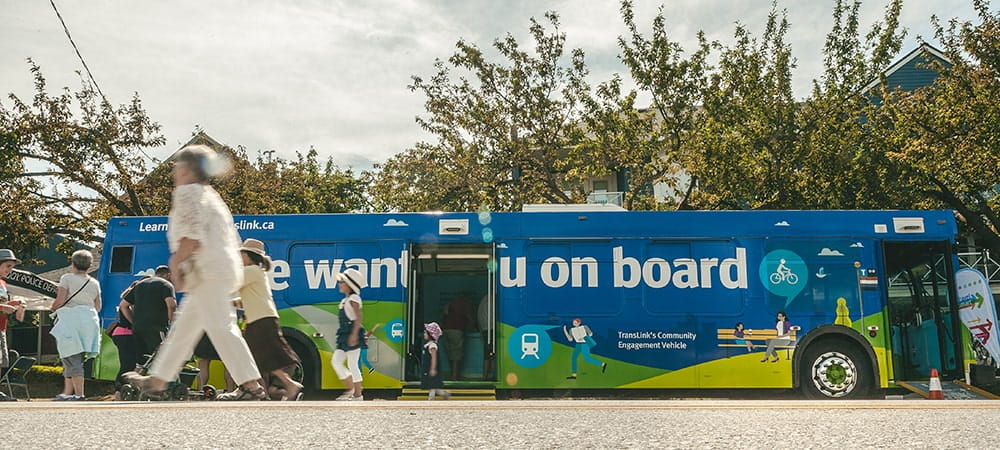Principles of Public Consultation & Community Engagement

TransLink has worked to develop a full and inclusive public consultation approach to its plans and projects. These principles help us develop and implement projects and plans that reflect the enterprise's and region's desire for a sustainable transportation system.
Integrate public consultation
Public consultation will be integrated into the planning of all major capital projects, the development of all significant new policies, and all major planning processes.
Consider both local and regional perspectives
When geographically specific projects have broader implications, perspectives from throughout the region should be sought in addition to local views.
Work with municipal partners
Public consultation programs will be planned and implemented in cooperation with interested Metro Vancouver municipalities and other levels of government as appropriate.
Clearly define the parameters of the consultations
When starting the public consultation processes, we will define the objectives, scope, and parameters of the consultations, noting which matters are subject to dialogue with the public and stakeholders.
This process will include estimated timing of any decisions, who the decision makers are and what criteria will be used in guiding these decisions.
Consult in advance of key decisions
Public consultation will be undertaken well in advance of decisions made by the TransLink Board of Directors on major projects, policies, and programs, when options are still open to consideration.
The results of the applicable consultation process will be communicated to the board and the public for the board’s consideration of the project, plan, or policy, either in a separate report or within a broader report to the board.
Be inclusive and accessible
A range of opportunities and information in a variety of formats will be provided for meaningful public input, to ensure the process is appropriately inclusive.
Public consultation will be tailored in response to the needs of the public and stakeholders regarding the issue at hand. Activities may include, but will not be limited to, open houses, advisory committees, workshops, public forums, websites, and survey research.
A public consultation webpage will be identified on translink.ca. This webpage will direct viewers to the appropriate areas of the website where public consultation reports, opportunities for feedback, etc can be accessed.
Ensure participants have the opportunity to provide informed input
Public consultation requires informed participants. TransLink will ensure sufficiently comprehensive and accurate information in a variety of formats is available to participants in a timely manner, and that opportunities for interaction with TransLink representatives are provided, so questions can be answered as part of the information-sharing process.
Consider public input as advice
Public input obtained through consultation processes is considered as advice to the SCBCTA Board of Directors and other decision makers. The Board will use this advice in its decision-making processes, in addition to technical, environmental, social, economic, and financial information, and other considerations deemed appropriate.
Inform participants about the results of the consultation process
TransLink will report to the public on the results of its consultation processes in a variety of locations and formats and will demonstrate how public input has been used in its decision-making processes.
